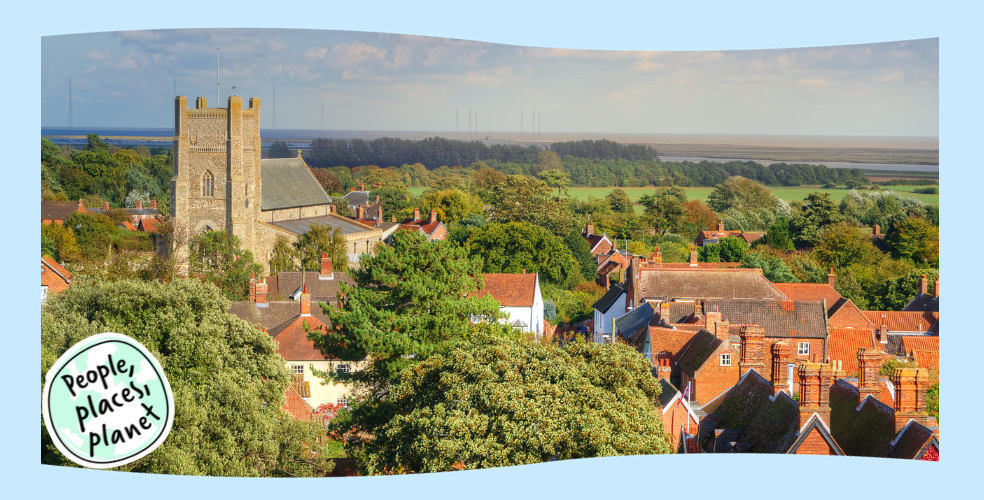When a developer submits an application to the council to transform a local site, there’s a physical piece of paper that gets pinned to nearby lampposts called a site notice. Until now, this site notice has been the main way residents can expect to find out about new developments in their local area.
The Ministry of Housing, Communities and Local Government provided funding to make digital versions of these site notices, so residents can engage in planning decisions during the pandemic.
We’ve been working with Camden Council, Middlesborough and Buckinghamshire on ways to improve these site notices, so they can make sure they’re engaging their communities in decisions and giving a platform to those from underrepresented groups who don’t often speak up.
More than a piece of paper
Camden wanted to encourage more diverse groups to have their voices heard and improve the quality of resident feedback so that decisions about the local environment were representative of the community.
To design a site notice that achieves these outcomes, we need to think about the site notice as a service that allows residents to make their views known and input on decisions, not just a piece of paper that tells people about a new development.
Thinking about the site notice in this way helps us identify the different parts of the process that might prevent residents from engaging. Such as how they find the site notice online, what information they read, how they provide feedback and how this feedback is processed, actioned and fed back to residents.
Thinking about how residents will interact with a site notice from their perspective allows us to design an experience that starts to look and feel much more like a dialogue. Now residents are actively able to participate in decisions, rather than simply being told about them via a notice on a lamppost.
Making planning relevant to residents
People living in Camden care about the impact that developments will have on their lives but often struggle to see the relevance of the information provided to them.
Experts often say that educating citizens on the planning system will mean they have the skills and knowledge to engage. If more residents understand the process and the technical terms planners use, they’ll know how to provide useful input to planning departments.
Camden Council is serious about improving the lives of its citizens by encouraging engagement, recognising a need to speak their language and build a system that’s easier to engage with. If we begin talking about planning decisions in terms people understand and ways they find relevant, such as the impact on green space, transport and jobs, we can make sure local communities can influence the things they care about.
Asking the right questions
Many Planning Officers often get negative feedback from residents or requests beyond the scope of what they can influence. Being unable to deal with requests like these can be frustrating, as staff want to make informed decisions shaped by and with communities.
When trying to encourage residents to participate, we often assume that residents know what kind of input we’re looking for. This lack of communication about what feedback residents should give means existing forms of engagement are difficult to access and people don’t know how and when to take part in planning decisions.
Often, the negative feedback residents provide stems from frustrations they experience when trying to make their voices heard in the current system and the fact we aren't specific about what we are asking them for.
Instead of providing an email address and statement about contacting the department with any objections, we could explain that positive feedback can make a difference and describe the kind of constructive criticism we need. Asking specific questions allows us to explain what residents can influence so that their opinions can be taken on board.
What we did
By supporting staff we worked on how a digital site notice might solve these challenges and focused on ways to make them more accessible. We prototyped mockup digital site notices and tested them with citizens from underrepresented groups.
Residents care about the social and economic impacts of local developments and they like to give feedback on the things they care about such as green space, transport and jobs. Camden’s new digital site notice makes this simple, providing the kind of relevant information they care about and easy ways to feedback while simplifying the complexities of the planning system.
With accessibility at the forefront of the design, residents can easily see how developments will affect their everyday lives, whether this is transport, community services, jobs or other public services. They’re also able to share their opinions on what they would like the council to spend money on in their neighbourhood.
Leaving behind a legacy
The digital site notice is a small part of a much larger piece of work to make planning more accessible to residents and communities. Making sure this kind of work has a legacy starts with changing mindsets and leaving behind a strong sense of how staff in public institutions can work together with residents on shaping their place.
Planning officers at Camden were heavily involved in testing sessions so that they were able to witness firsthand residents’ experiences of navigating the planning system.
"Sitting in on user testing sessions made me realise just how bad we are at communicating what we do."Rich Limbrick
Planning Manager
By sharing the lived experiences of residents and bringing the Camden team in on the design process, we‘re leaving them with a new perspective and the tools to take this approach forward.
"To really transform the consultation process, empower and engage all parts of the community, the planning system needs to evolve in the way it presents and collects information. Ensuring residents are involved at the right stage, in the right way and fed back to, meaningfully."Jonathan McClue
Deputy Team Leader
There's lots of work to do to create a planning system that directly engages residents in shaping the future of their place. Digital site notices are a small step for Camden in creating a dialogue with residents to build trust and strengthen relationships with local communities.
"The site notice user-testing showed how important it is to test our assumptions with people from a wide range of backgrounds and understanding of the planning system. Planning is complex and we’re often stuck between statutory requirements and the need for communicating clearly, simply and transparently. User testing helps us develop and reach a balance between the two."Nora Constantinescu
Senior Planning Officer

How local action can transform the UK's path to net zero
Discover the pivotal role of local authorities and communities in the fight against climate change
Read moreOur recent insights

How local action can transform the UK's path to net zero
Discover the pivotal role of local authorities and communities in the fight against climate change
Read more
Empowering communities: the impact of citizens' assemblies
We spoke to Ellen Jennings, Senior Workstream Coordinator at Barnet Council’s Sustainability Team, about the importance of citizens' assemblies in helping to address the climate emergency.
Read more
Bringing community power to life
Our Community & Political Engagement Director, Claire Hazelgrove, shares her experiences from Stronger Things
Read more

